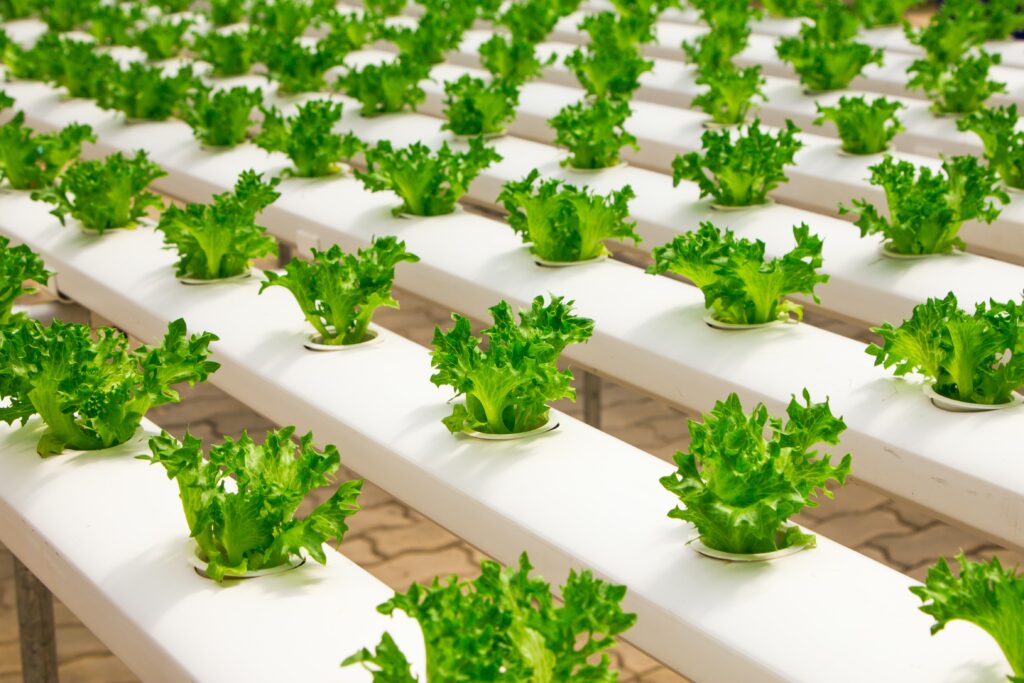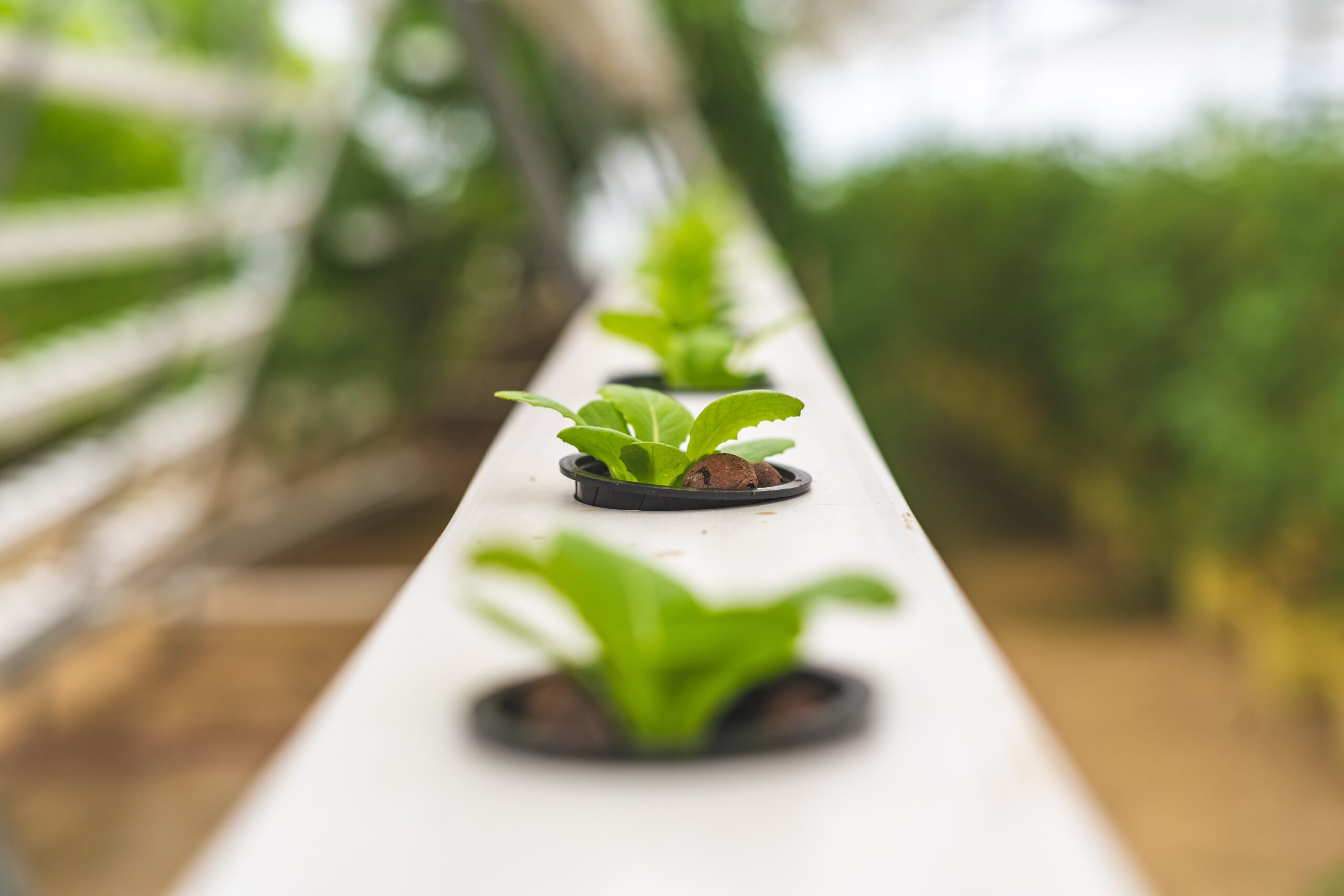Food solutions – When feeding water quality is taken into consideration, some micronutrients may have phytotoxic effects at high concentrations and that high levels of Fe and Mn in feeding water may block drippers. Should the Fe- and/or Mn-levels be too high in feeding water, it should be removed in advance.
It is seldom possible to remove all the Fe and Mn but these nutrients should at least be lowered to safer lower levels. The micronutrients may be topped up to its required level, but due to the quick oxidation of Fe, the Fe in the feeding water must be ignored and the total Fe-need must be applied, using Fe-chelate. As with macronutrients, the other micronutrient levels in the feeding water should be topped up to their optimum levels.

Should the micronutrient levels in feeding water exceed the levels it may be toxic. The physical procedure to add macro- and micronutrients to water will be discussed after a closer look at the solubility of salts. It should be noted in advance that the pH of solutions should be monitored while preparing macro- and micronutrient stock solutions.
Some micro- and macronutrients may precipitate as insoluble compounds in high pH solutions. On the other hand, Fe-EDTA may disintegrate, leaving the Fe-ion unprotected at pH levels lower than 3.5.
Solubility of salts
Some growers use shaded porta-pool reservoirs to mix their nutrient solutions. After filling these reservoirs with water, fertilizers are dissolved into it, using pumps to circulate the water. The modern trend is to switch to smaller fertilizer tanks, containing concentrated stock solutions to be injected into passing feeding water.
Recipes for specific crops
Using inert soil-less substrates, only the roots interact with the nutrient solution that may change ratios between the different ions due to different uptake tempos. More changes are found in organic substrates where N-reserves may be used and bicarbonate levels may increase during decomposition of the organic matter.
To prevent significant deviations in nutrient levels, frequent irrigations with fresh nutrient solution is done in drain-to-waste production systems. The applied volume of nutrient solution must exceed the plant’s need, allowing about 10-20% drainage. This prevents salt accumulation and ensures that the relatively small root volumes are flushed out a few times per day, to be replaced with fresh nutrient solutions.
Dutch growers mainly use rock wool, whereas most South African growers use organic substrates, such as pine sawdust or coir. Apart from the chemical N- or bicarbonate changes in decomposing organic substrates, its physical properties also change. Its water holding capacity will increase to the detriment of its aeration, necessitating less frequent but bigger fertigation pulses per day.
By allowing more time for air to move into the substrates and root zones between fertigation pulses, root respiration will be sustained, enabling the uptake of water and nutrients. By ignoring this or with too many fertigation pulses per day, waterlogging may be induced at a late stage of the crop’s development.
This will be associated with symptoms of premature ageing, such as yellowing of leaves that may be confused with nutrient deficiencies.
For closed systems, where the nutrient solution is re-circulated, slightly lower levels are used, only for some nutrients that tend to accumulate during re-circulation. To optimize plant nutrition De Kreij et al developed procedures to change input nutrients, as soon as root zone solutions indicate that imbalances are developing. This practice is essential where solutions are re-cycled, but it is also effective to optimize plant nutrition in drain-to-waste systems where nutrient needs may change when plants develop from vegetative- to reproduction stages or with changes in climatic conditions.
Drain-to-waste production systems
Lower nutrient concentrations are proposed for South African conditions, due to our warmer conditions and higher light intensities.
Closed production systems
In a closed system, the drained nutrient solution is re-used. When the solution is recirculated, the input solution should be less concentrated than ‘drain-to-waste’ solutions in anticipation of the accumulation of some ions.
Despite these well-planned nutrient solutions, imbalances may develop during production. The same root zone target values, as mentioned for the drain-to-waste production system are also used to check deviations from optimum levels in closed production systems.

Stricter feeding water norms apply for closed systems due to its zero run-off. Using feeding water with high levels of Na and Cl may be problematic due to the accumulation of these ions since most crops absorb Na and Cl at very low rates. Due to the low rainfall in most of South Africa’s production areas and the use of tunnel-shaped structures, accumulation of rainwater is not a practical solution in most of our production areas.
However, it is possible to use feeding water with relatively high Na and Cl concentrations, if the expected accumulation of Na and Cl is closely monitored to avoid concentrations from reaching their critical levels (substratemax) where yield losses will set in. Cherry tomatoes can be considered as more tolerant to saline conditions than standard tomato cultivars. A grower at Yzerfontein manages to grow cherry tomatoes, chillies, basil and rocket with feeding water containing Na at 12 meq L-1 in a drain-to-waste production system.
When using root zone solutions
To correctly apply nutrient solutions, the drainage percentage should lie between 10% and 30% to ensure that the calculation process works well. Due to economic reasons (saving on water and nutrients), growers who use the ‘drain-to-waste’ production system try to keep their drainage percentages as low as possible. However, it is important to manage the pulse volume in such a way that all the containers do drain after each fertigation pulse. By Dr JJ Combrink, SU

